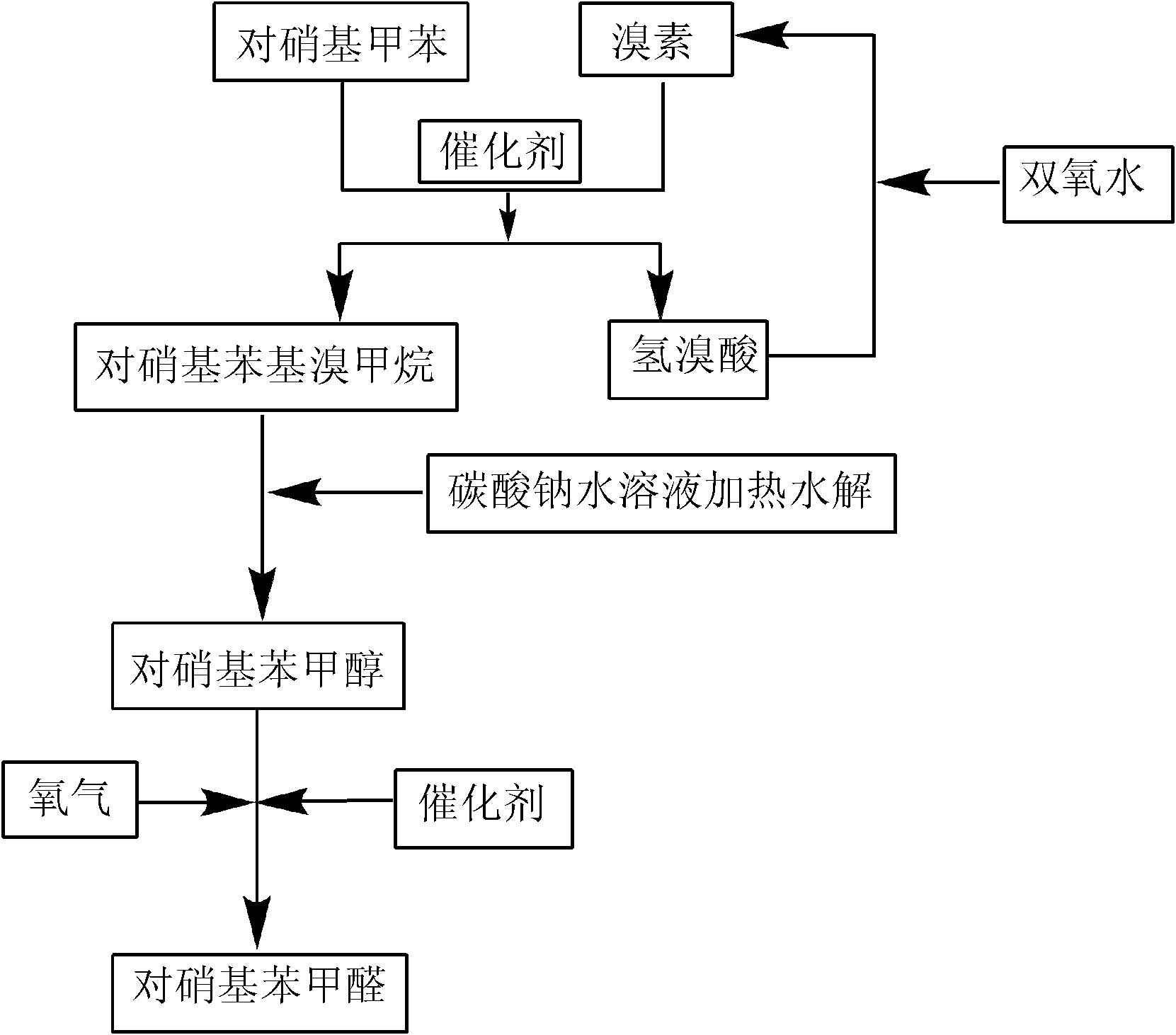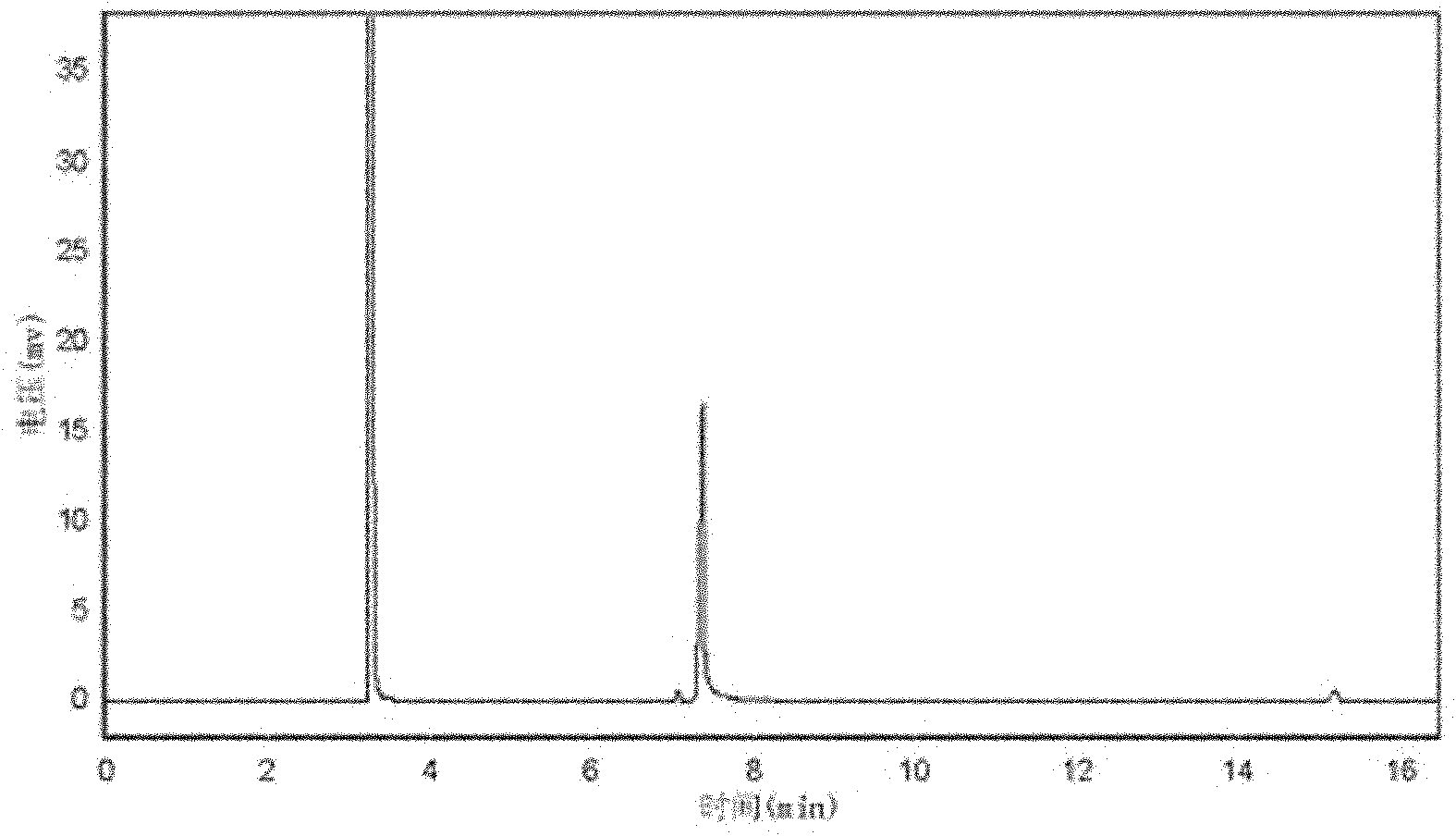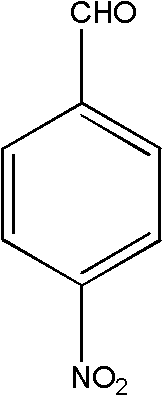High selectivity synthesis method of p-nitrobenzaldehyde
A p-nitrobenzaldehyde, high-selectivity technology, applied in the field of preparation of known compounds, can solve the problems of expensive catalysts, difficult to recycle and recycle, etc., to reduce the generation of organic by-products, shorten the reaction time, and reduce bromine The effect of consumption
- Summary
- Abstract
- Description
- Claims
- Application Information
AI Technical Summary
Problems solved by technology
Method used
Image
Examples
Embodiment 1
[0027] In a 250mL three-necked flask, add 100g of dichloroethane, 20.5g of p-nitrotoluene, 1.0g of di(2-ethyl)hexyl peroxydicarbonate dissolved in 16g of dichloroethane, at 45°C, Slowly add 12.3 g of bromine dropwise in 30-60 minutes. After the dropwise addition, maintain the temperature and stir for 3 hours to form a light yellow solution. After adding 0.5 g of di(2-ethyl)hexyl peroxydicarbonate dissolved in 8.0 g of dichloroethane, slowly add 9.5 g of 27% hydrogen peroxide dropwise in 30 minutes, and control the temperature at 65-68° C. to stir the solution for 4 hours. Add 65g of 30% sodium carbonate aqueous solution to the bromination solution, stir and raise the temperature to recover 80g of dichloroethane, and stir the mixed solution at 80-95°C for 16h. Stand to separate the aqueous phase and the organic phase containing p-nitrobenzyl alcohol. Transfer the organic phase into a stainless steel pressure vessel, 0.23g triphenylphosphine bismuth salt, at a temperature of 50...
Embodiment 2
[0029] In a 250mL three-necked flask, add 80g of dichloroethane, and then add 20.5g of p-nitrotoluene, 1.2g of di(2-ethyl)hexyl peroxydicarbonate dissolved in 19g of dichloroethane, at 45 At ℃, slowly add 12.7g of bromine dropwise within 30min. After the dropwise addition, stir and react at 50°C for 3.5h, then slowly add 9.5g of 27% hydrogen peroxide dropwise within 30min, and control the temperature at 60-62°C to stir the solution for 5h. Add 65g of 30% sodium carbonate aqueous solution to this bromination solution, stir and raise the temperature to recover 70g of dichloroethane, and stir the mixed solution at 80-95°C for 16h. Stand to separate the aqueous phase and the organic phase containing p-nitrobenzyl alcohol. Transfer the organic phase into a stainless steel pressure vessel, 0.23g triphenylphosphine bismuth salt, at a temperature of 50-70°C, 8.1×10 5The reaction was stirred for 28 h under Pa oxygen atmosphere pressure. After the reaction, add 20 g of water under nor...
Embodiment 3
[0031] In a 250mL three-necked flask, add 80g of dichloroethane, followed by adding 20.5g of p-nitrotoluene, 1.2g of di(2-ethyl)hexyl peroxydicarbonate dissolved in 19g of dichloroethane, at 45°C Slowly add 12.7g of bromine dropwise within 30min. After the dropwise addition, stir and react for 3.5h, slowly add 9.5g of 27% hydrogen peroxide dropwise within 30min, control the temperature at 65-68°C and stir the solution for 5h. Add 65g of 30% sodium carbonate aqueous solution to this bromination solution, stir and raise the temperature to recover 80g of dichloroethane, and stir the mixed solution at 80-95°C for 16h. The aqueous phase and the organic phase containing p-nitrobenzyl alcohol and the like were separated by standing. Transfer the organic phase into a stainless steel pressure vessel, 0.23g triphenylphosphine palladium salt, at a temperature of 50-70°C, 8.1×10 5 The reaction was stirred under Pa oxygen atmosphere pressure for 22 h. After the reaction, add 20 g of wate...
PUM
 Login to View More
Login to View More Abstract
Description
Claims
Application Information
 Login to View More
Login to View More - R&D
- Intellectual Property
- Life Sciences
- Materials
- Tech Scout
- Unparalleled Data Quality
- Higher Quality Content
- 60% Fewer Hallucinations
Browse by: Latest US Patents, China's latest patents, Technical Efficacy Thesaurus, Application Domain, Technology Topic, Popular Technical Reports.
© 2025 PatSnap. All rights reserved.Legal|Privacy policy|Modern Slavery Act Transparency Statement|Sitemap|About US| Contact US: help@patsnap.com



